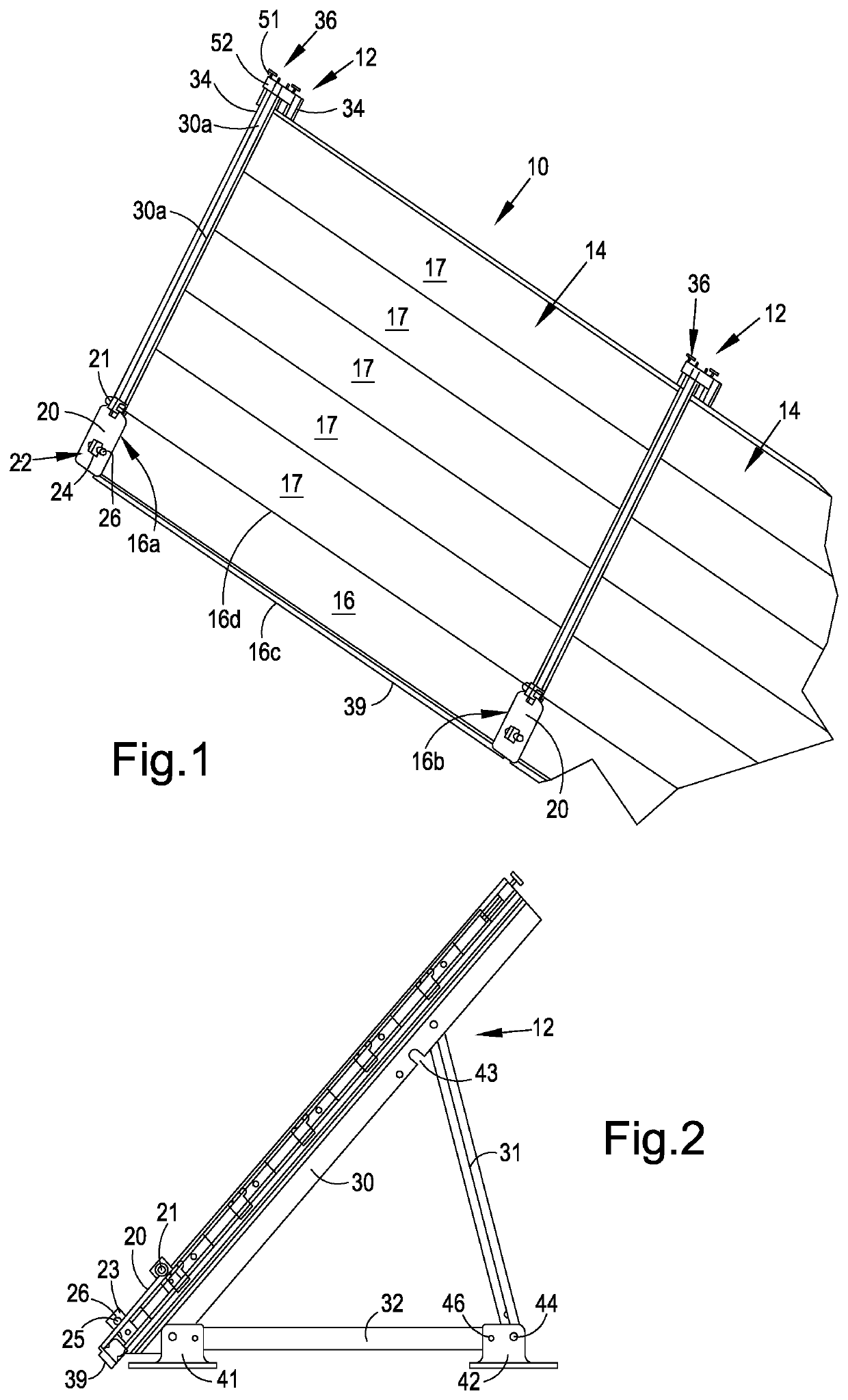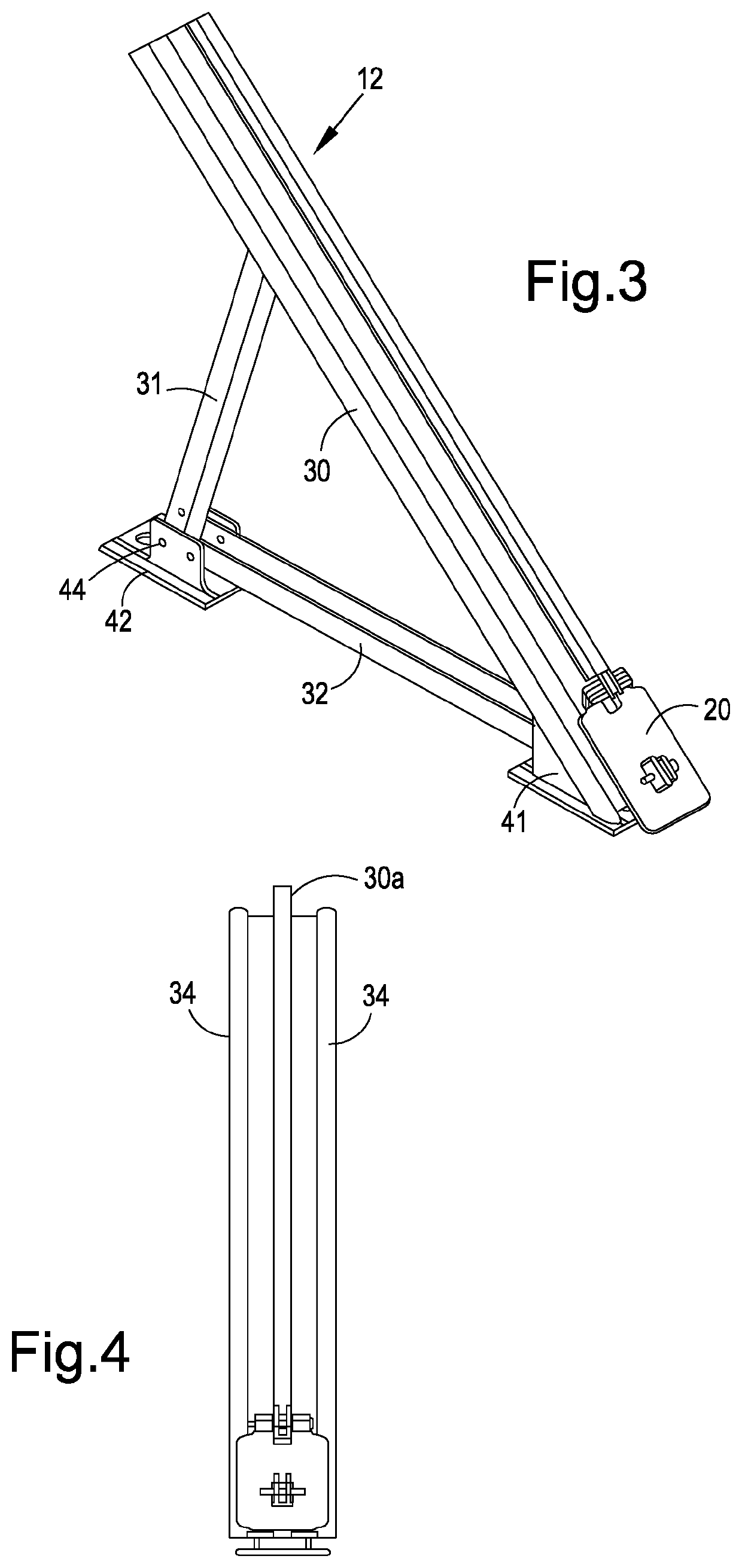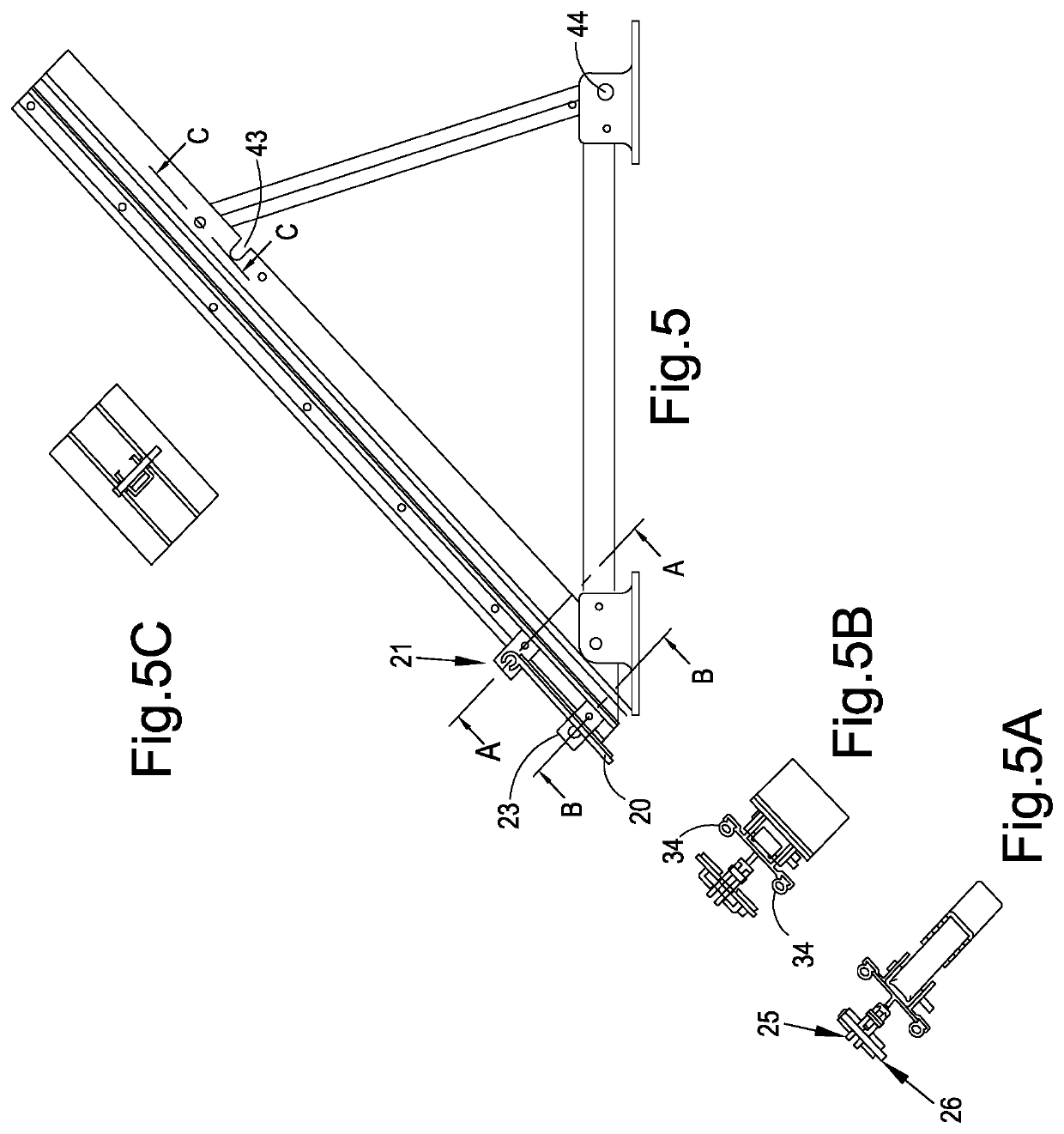Flood barrier
a flood barrier and floodwater technology, applied in the field of flood barriers, can solve the problems of limited life, prone to sliding of membranes, affecting the safety of workers, and reducing so as to reduce the risk of floodwater sliding
- Summary
- Abstract
- Description
- Claims
- Application Information
AI Technical Summary
Benefits of technology
Problems solved by technology
Method used
Image
Examples
Embodiment Construction
[0055]The present embodiments represent currently the best ways known to the applicant of putting the invention into practice. But they are not the only ways in which this can be achieved. They are illustrated, and they will now be described, by way of example only. Like reference numerals are used to refer to like components.
[0056]Referring to FIG. 1, an assembled flood barrier 10 is shown. Although an assembled flood barrier will be described, it will be understood that it can be provided as a kit such that it can be assembled / disassembled as required so that the barrier can function as a portable flood barrier. The flood barrier has a waterside to be placed adjacent a body of water and a protected side opposing the waterside. The flood barrier 10 has a plurality of stanchions or supports 12 and a plurality of intermediate barrier sections 14, one intermediate barrier section 14 disposed between each pair of neighbouring supports. In FIG. 1, two supports 12, one whole intermediate...
PUM
 Login to View More
Login to View More Abstract
Description
Claims
Application Information
 Login to View More
Login to View More - R&D
- Intellectual Property
- Life Sciences
- Materials
- Tech Scout
- Unparalleled Data Quality
- Higher Quality Content
- 60% Fewer Hallucinations
Browse by: Latest US Patents, China's latest patents, Technical Efficacy Thesaurus, Application Domain, Technology Topic, Popular Technical Reports.
© 2025 PatSnap. All rights reserved.Legal|Privacy policy|Modern Slavery Act Transparency Statement|Sitemap|About US| Contact US: help@patsnap.com



